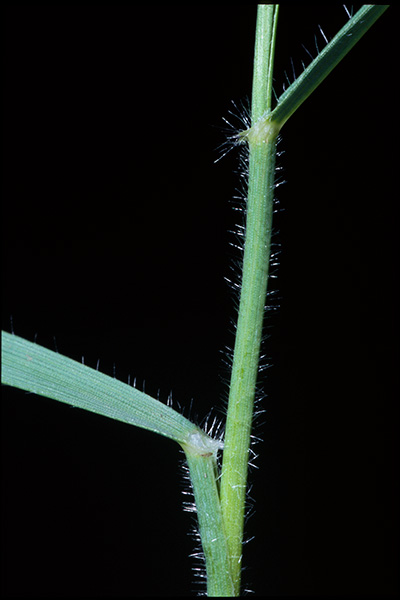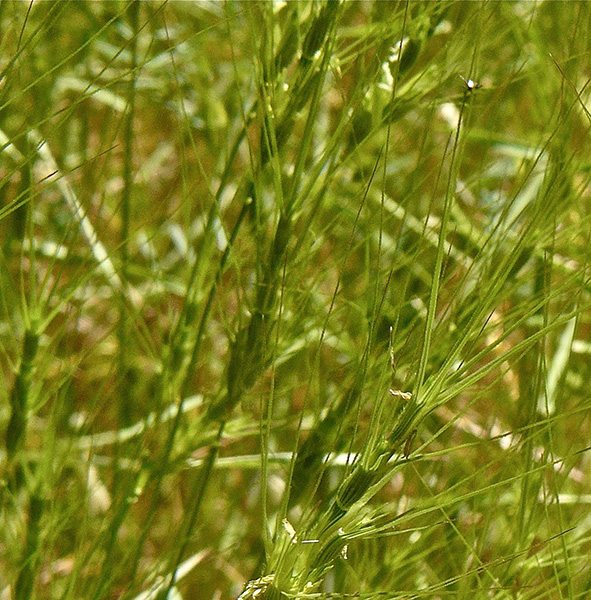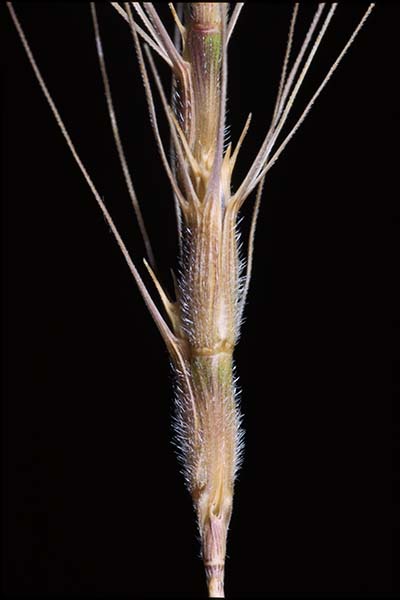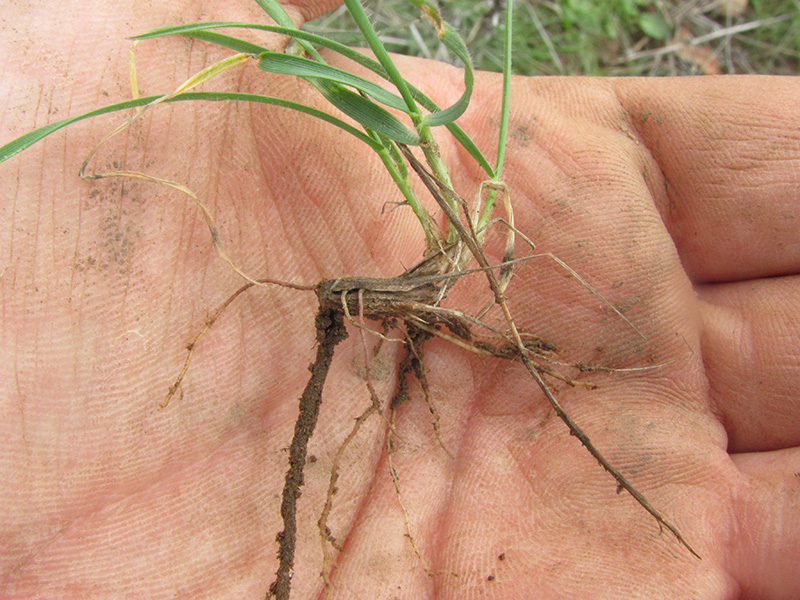
Barbed goatgrass stem
Leaves
- Gray green, 1-4 in. long, ridged and sharp; sparsely covered with long white hairs; ligules are
membranous and auricles are clasping

Barbed goatgrass
Flower
- Seedheads are 1-2.5 in. long, reddish or purplish then dry to straw color; each spike has 4 sessile spikelets with 1-2 florets each; 3 long, stiff awns come from each glume; awns and glumes are all minutely barbed

Barbed goatgrass seed
Root
- Fibrous; spikelet that led to germination often still attached to base of plant

Barbed goatgrass root
Other
- Infests rangelands, grasslands, pastures and croplands; known to occur in Washoe county
- Winter annual; seeds viable for 2+ years; high silica content produces persistent thatch layer
- Livestock avoid mature plants due to awns; seedheads stick to clothing and fur
- Can crossbreed with wheat, producing sterile seed and unsaleable wheat
Control
- Hand pulling or hoeing is effective on small infestations; mowing is ineffective as plants will regrow; deep tilling can place seeds below sprouting depth, but repeated tilling can bring buried seeds to the surface; burning of infested fields may be effective, but will not control seedbank
- Glyphosate effective on actively growing plants before flowering; chlorsulfuron, imazapic, sulfometuron are effective preemergence and early post emergence
Blecker, L., Creech, E., Dick, J., Gephart, S., Hefner, M., Kratsch, H., Moe, A., Schultz, B.
2020,
Nevada Noxious Weed Field Guide – Barbed goatgrass,
Extension, University of Nevada, Reno, Field Guide


